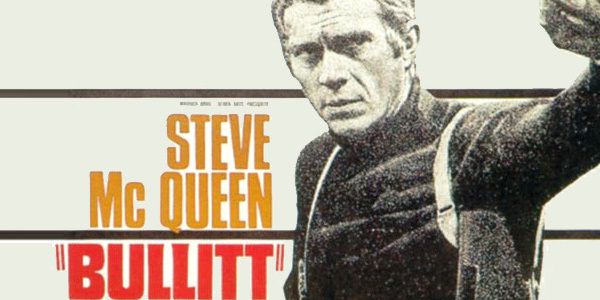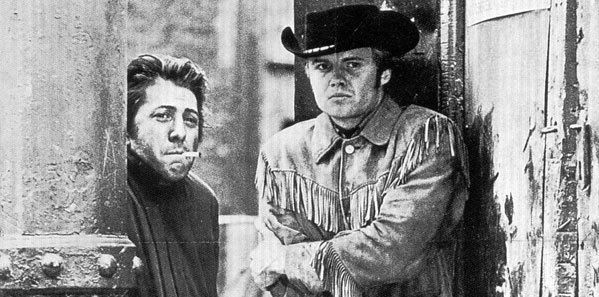Ryan Gosling is a Steve McQueen-style knight in tarnished armor in Nicolas Winding Refn's Drive, a slick urban fairy tale punctuated by shocking bursts of graphic violence, and distinguished by its stylized, yet uncompromisingly classical approach to material that could have easily become clichéd and forgettable in the hands of a lesser filmmaker. A sort of art-house Fast and the Furious for audiences weary of whiz-bang over-editing and empty bombast, it bears the unmistakable mark of a modern auteur by being at once intensely modern and obsessively retro, and it serves as an exciting reminder that filmmakers needn't necessarily sacrifice story and character for intense action.
A lone-wolf Hollywood stunt driver (Gosling) moonlights as a freelance getaway wheelman, and he finds his solitary existence taking on new meaning after befriending Irene (Carey Mulligan), the lonely wife of convicted felon Standard (Oscar Isaac), and her young son Benicio (Kaden Leos). When Standard gets released from prison and is strong-armed into committing a bold daytime robbery, the Driver offers his services in an effort to help the repentant ex-con cut his ties to the criminal underworld. Things get complicated, however, when the robbery goes unexpectedly awry, and the Driver just barely manages to escape alive. When the take from the job proves to be stratospherically higher than the Driver was led to believe, it quickly becomes apparent that they were set up. Later, thugs threaten to kill Irene and Benicio, and all evidence points to transplanted New York crime boss Bernie Rose (Albert Brooks) and his hot-headed partner Nino (Ron Perlman) as the masterminds. As the Driver attempts to turn the tables on them, it becomes clear that the chain of command goes much higher than he could have ever anticipated.
At first glance, the plot of Drive sounds like the setup for your standard, adrenaline-saturated Hollywood actioner. In the capable hands of Refn and screenwriter Hossein Amini, however, it gradually takes on the vibe of a gritty, contemporary fable -- complete with a noble hero, a damsel in distress, and despicable villains. Refn, an ambitious filmmaker with an eclectic filmography, works carefully to perfect a seductive, ethereal rhythm that subverts the pedal-to-the-metal car-chase flick. Scenes that would typically feature a dozen edits play out in long, single takes featuring assured camera movements that heighten the suspense, and the electronic-heavy score evokes mesmerizing memories of Tangerine Dream.
The simmering chemistry between Gosling and Mulligan, meanwhile, gives Drive the aching air of a forbidden romance. Soon after their first meeting, it's obvious that the two characters are drawn to one another. It's when circumstances conspire to keep them apart that things really start to get interesting. But there's no jealousy, bitterness, or resentment between the Driver and Irene once their relationship reaches its limit, and by giving the Driver a sense of stoicism and moral ambiguity, Refn and Amini create a compelling character who is unquestionably flawed, but still honorable in his own unique way.
Likewise, the supporting characters are painted with equal complexity: A desperate man drawn somewhat helplessly into a dire situation, Standard is a far cry from the ex-con stereotype, and Isaac brings his inner conflict to the surface in a manner that evokes genuine sympathy. And while Bernie is essentially Albert Brooks with psychotic impulses, it's precisely that easygoing amiability that evokes such unrelenting tension once the situation takes a turn for the worst. Bryan Cranston, who recently managed to make the rare transition from sitcom star to respected actor thanks largely to his role in AMC's Breaking Bad, makes a big impression as Shannon, the garage owner who took the Driver under his wing after recognizing his inherent wizardry behind the wheel and under the hood. Perlman's Nino is just about the only character in the primary cast that could be accused of being entirely one-dimensional, but even so, the popular character actor makes him completely watchable.
Throughout his career, Nicolas Winding Refn has proven that measured violence can be the most effective. Much like his previous film -- the ultra-polarizing Valhalla Rising -- the bloodshed in Drive is brief but shockingly brutal when it eventually happens. But as proven in a climactic confrontation that unfolds entirely in shadow, Refn also exercises restraint in a manner that's strikingly artful and keeps us teetering nervously on the edge of our seats. Young directors would do well to take a cue or two from Refn when it comes to telling an engrossing story, because when a filmmaker with real vision is at the wheel, even the familiar can feel fresh, new, and exciting.














































